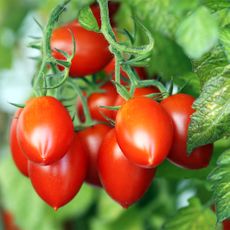Pear Flyspeck Control – Tips On Treating Pears With Flyspeck Disease

Growing in a wide range of USDA zones, pears are one of the most popular fruit trees for the home garden. With their firm, crunchy flesh, it is easy to see why they are orchard staples. Like many fruit trees, however, there are a multitude of issues that impact the quality of the harvest. One such concern is a fungal issue known as flyspeck damage.
What Causes Pear Flyspeck?
Planning and planting a home orchard can be a labor of love. Whether designing a large-scale operation or just planting a few trees for your family to enjoy, the process of maintaining a healthy orchard is quite an investment. Knowing how to properly prevent and identify some common fungal issues, like flyspeck on pears, will help maintain plant vigor and ensure better overall health. Flyspeck is caused by a fungus. Spores of the fungi spread in areas that experience high humidity. During these periods of wet and humid weather, spores are released from host plants and infect pear trees. In addition to pears, development of flyspeck may also appear on apples within the same orchard. Luckily for growers, flyspeck damage is relatively minimal and does not usually impact the fruit beyond the exterior. Damage to the waxy outer layer of the pear fruit appears in the form of dark color “specks,” hence the name. These fungal specks are usually able to be removed by a thorough rinsing of the fruit.
Pear Flyspeck Control
Although fungicide sprays are available for commercial growers, the best course of action for home gardeners in need of treating pears with flyspeck lies with prevention. Proper tree maintenance, such as pruning, will result in better airflow and reduced occurrence of flyspeck. While there are no varieties that offer resistance to this fungal issue, choosing pear types which mature earlier in season will better limit the amount of time developing fruit is exposed to low temperatures and high humidity. Lastly, make sure to maintain proper cleanliness within and around the orchard. Remove host plants near trees, such as wild blackberry brambles.
Gardening tips, videos, info and more delivered right to your inbox!
Sign up for the Gardening Know How newsletter today and receive a free copy of our e-book "How to Grow Delicious Tomatoes".

Tonya Barnett has been gardening for 13 years. Flowers are her passion. She has transformed her backyard into a cut flower garden, which she regularly chronicles on her YouTube channel http://www.youtube.com/@tonyawiththeflowers.
-
 Best Determinate Tomatoes: Compact Varieties With Big Yields For Cooking & Canning
Best Determinate Tomatoes: Compact Varieties With Big Yields For Cooking & CanningDeterminate tomatoes are prized for their compact growth and bountiful harvests. Learn their characteristics and choose the best varieties for your garden.
By Bonnie L. Grant
-
 Ideal Azalea Water Requirements – For Lush, Healthy Shrubs That Will Thrive For Years
Ideal Azalea Water Requirements – For Lush, Healthy Shrubs That Will Thrive For YearsWhat are an azalea's water requirements? Learn how to keep these beautiful spring-blooming shrubs happy and healthy in your yard or container garden.
By Amy Grant